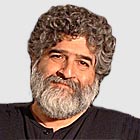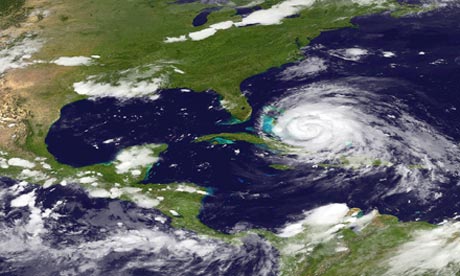September 9, 2011
Reinvestigate911.org
For more info or interviews please call Ian Henshall on 01273 326862 or 079469 39217
Today Ian was on LBC 8.30am, this evening scheduled on Talksport 11.30pm
A new opinion poll shows surprisingly high levels of doubt in the UK over the official story of the 9/11 attacks. The poll, conducted by ICM on behalf of
Reinvestigate911.org, found that more people agree than disagree that the official account of what happened on 9/11 might turn out to be wrong in important respects. Only 8% strongly agree that they have been told the full story of the 9/11 attacks.
Of those who expressed an opinion 37% agreed that rogue elements in the American intelligence services may have made a decision prior to 9/11 to allow a terrorist attack to take place. Richard Clarke, White House anti-terror co-ordinator at the time, said recently that the 9/11 attacks could have been foiled but for an explicit agreement within the CIA to withhold vital information from him and the FBI. Clarke says he cannot explain this behaviour. At the time the CIA were prohibited by law from operating in the US.
The results are mirrored by a HEC poll published today in France showing that 58% have doubts compared to 31% percent who accept the official story. Half suspect that US authorities deliberately allowed the attacks to take place while a third suspect they were implicated in the execution of 9/11.
Reinvestigate911.org is campaigning for a closer examination of unanswered questions they say remain on the table ten years later. They are holding a London conference on October 15 on what they call SCCADS, state and corporate crimes against democracy. Speakers will address issues from the David Kelly case to the rise to power of New Labour in the 1990s
Ian Henshall of Reinvestigate 9/11 says, "People remember the Iraq WMD fiasco which showed how wrong the official story can be, even on an important matter of war and peace".
"Richard Clarke knows more than anyone about this. It is no longer feasible to label all 9/11 sceptics as conspiracy theorists".
"It beggars belief that we are still in Afghanistan ten years later when the case for invasion was never properly made in the first place. If Bush had declared war on government incompetence instead of unleashing a bloodbath we would not be in the mess we are in now."
"We agree with Senator Max Cleland, who resigned from the 911 Commission and denounced it as a whitewash and a national disgrace. This is not the only issue. John Farmer a senior Commission official later wrote that they had determined there was a decision to lie to them by the Pentagon and considered bringing criminal charges. The report made no mention of this nor the mysterious anti-hijack exercise running at the time of the attacks. It also left out any reference to the collapse of WTC 7 which was not hit by a plane and fell symmetrically at freefall speed into its own footprint".
Notes
Levels of doubt in the UK poll were fairly even across social class and age, but higher in Scotland. High levels of don't know and neither agree or disagree indicate some respondents had not given the issue much thought. The figures show an even higher level of scepticism than the shock poll for the BBC released last week to coincide with the latest Conspiracy Files programme. Asked if they thought there was a wider conspiracy than Al Qaeda that included the American government, one in seven respondents and one in four young people said yes, with similar figures in a parallel poll the US.
For more details of ICM poll see their website. For French poll see
http://www.reopen911.info
Clarke's comments can easily be found on the web, he repeated them to the BBC's Conspiracy Files screened this week but they failed to emphasise that his statement overturns a decade of bland reassurances from Washington, echoed uncritically in earlier editions of the controversial BBC series.
RI911 would like to see9/11 doubts fully addressed and say this requires an inquiry that is entirely independent of Washington and follows the evidence, not the preconceptions of political lobbies. Two possibilities they cite are an inquiry run by unimpeachable international figures under the auspices of the UN General Assembly, or a fully independent Commission with subpoena powers in the US along the lines proposed by Senator Mike Gravel. He is calling for voters in key states to mandate support for this at state level. he says his solution would be independent of the Federal government, widely seen as hopelessly beholden to the same interests that have gained so much from the 9/11 wars and which some suspect helped to orchestrate the 9/11 attacks.
Reinvestigate 9/11 wants to gather a broad coalition ranging from people sure the official story is entirely wrong to those who feel a new investigation is needed to reassure the doubters who make up large majorities in some countries.
Reinvestigate 911 say the 911 Commission was never independent. Commissioner Cleland called it a "whitewash" and a "national scandal" and resigned for reasons that went unreported at the time but have since been revealed in a series of books from Commissioners, Commission investigators and the New York Times special correspondent Phil Shenon. One key moment was the failure to dismiss the powerful Executive Director Phillip Zelikow, a friend and colleague of Condoleeza Rice, when it was discovered that he had made secret phone calls to the White House in defiance of undertakings given when he was appointed. Later the Commission failed to demand more time and resources when it found that, in the words of senior investigator John Farmer, there was a "decision to lie" to them by key officials in the Pentagon.
Similarly they failed to get to the bottom of the decision to paralyse the FBI, which Clarke has now confirmed but which was obvious to independent investigators ever since FBI officers at two different field offices blew the whistle in 2002. Instead they dismissed it as unexplained and briefed reporters it was due to mix-ups.
The Commission's inexperienced and unassertive chair Thomas Kean worked in the shadow of Zelikow whose academic background included a study of the creation of political myths. Kean replaced Henry Kissinger, the first choice of the Bush White House, after an outcry from the 9/11 families. It later emerged Kean, a minor Republican politician, was a long time business associate of the Bush family. Lee Hamilton, the Democrat vice chair, has been accused of presiding over an earlier coverup as the man in charge of Congress' Iran Contra Inquiry which exonerated President Reagan. Hamilton later confessed that he knew this was wrong but judged it bad politics to say so. Kean and Hamilton appointed Zelikow with little or no consultation with other Commissioners and gave him dictatorial powers over investigation teams who were not even allowed to communicate directly with Commissioners.
Nonetheless Kean seemed upset by much of what he heard and in an outburst said the 9/11 attacks "could and should have been prevented", a view that was dropped from the final report under intense pressure from Republican Commissioners and hawkish media commentators. Families campaigning for full disclose were angered, saying that 70% of their carefully prepared questions had been ignored.
The Commission made little attempt to investigate the CIA other than to record that they had relied for their long account of the alleged Al Qaeda plot on interrogations of alleged ringleader Khaled Sheikh Mohammed supplied by the CIA. KSM was held in Guantanamo Bay and interrogated under torture. The Commissioners were given no access to either KSM or his interrogators. Recently the then White House anti-terrorism chief Richard Clarke has stated that the CIA made a decision to withhold information from him and the FBI, and that had this not happened the 9/11 attacks could have been foiled, confirming Kean's unofficial view at the time. There is little evidence that the Commission made any serious attempt to get to the bottom of the CIA's activities in effectively protecting the 9/11 plot from detection, although two different teams of FBI officers were complaining loudly and publicly about the way in which their investigations were stymied.
Have groups like Reinvestigate 9/11 any chance of success? "We know we will never get a real inquiry from the sort of people in power in the NATO countries at present", says Henshall, "but I am old enough to remember other apparently lost causes like the liberation of Eastern Europe or the acquittal of the Birmingham Six in the UK after many years of false imprisonment. The world is changing fast. Key factors are the increasing penetration of alternative news sources on the internet and the waning power of the US which has been looted by the people who many suspect had a hand in the 9/11 attacks that made it all possible for them. Despite the silence in the mainstream media people are thinking for themselves as our poll shows. Few are happy with the shameless abandonment of long established rights, the ruinous wars that are quite obviously about the short term enrichment of an elite, and the rulers' ever increasing distance from the general population.
"Sooner or later the dam will break. The political class seem to have lost the ability to respond to reality in a rational way. It may be sooner than most people think."
RELATED:
ADVANCE NOTICE - LONDON CONFERENCE SATURDAY OCTOBER 15
Ten Years after 9/11 anger and doubts over the insultingly simplistic and factually challenged official 9/11 story are as great as ever. Moreover the doubts have spread to many citizens as we expect our opinion poll will show tomorrow. This includes campaigners who up to now have been wary of bringing up 9/11 issues, based on the smears and sneers from too many people in the corporate media who should know better.
From now on we seek to create a broad movement of campaigns who suffer from outright lies and ruthless censorship from the corporate media that many of us know only too well.
This is a fluid situation as we work out areas of common interest. Provsionsally the Conference title is
SCCADS: State and Corporate Crimes Against Democracy: How we can investigate them and how we can campaign to stop them. We will have a list of respected speakers on subjects including 9/11, 7/7, Kelly, Bilderberg, and the global elite, Political Corruption and the creation of New Labour and other SCADS.
The detailed schedule and full list of speakers is not confirmed but includes Professor Niels Harrit (featured





